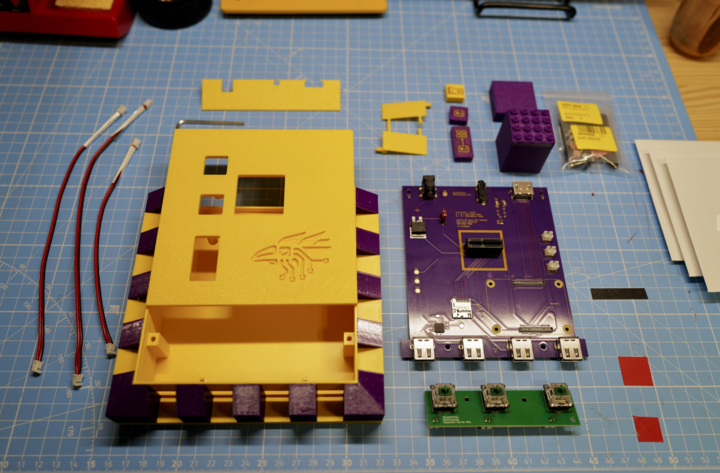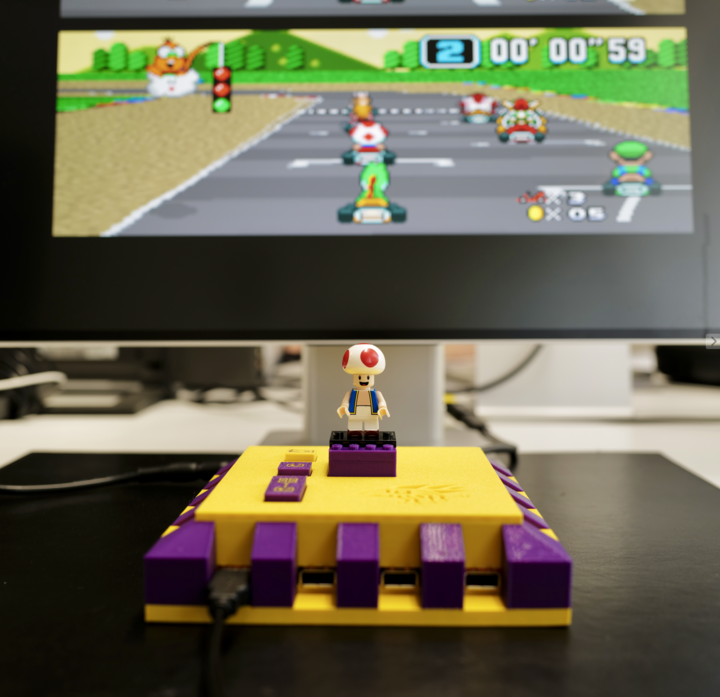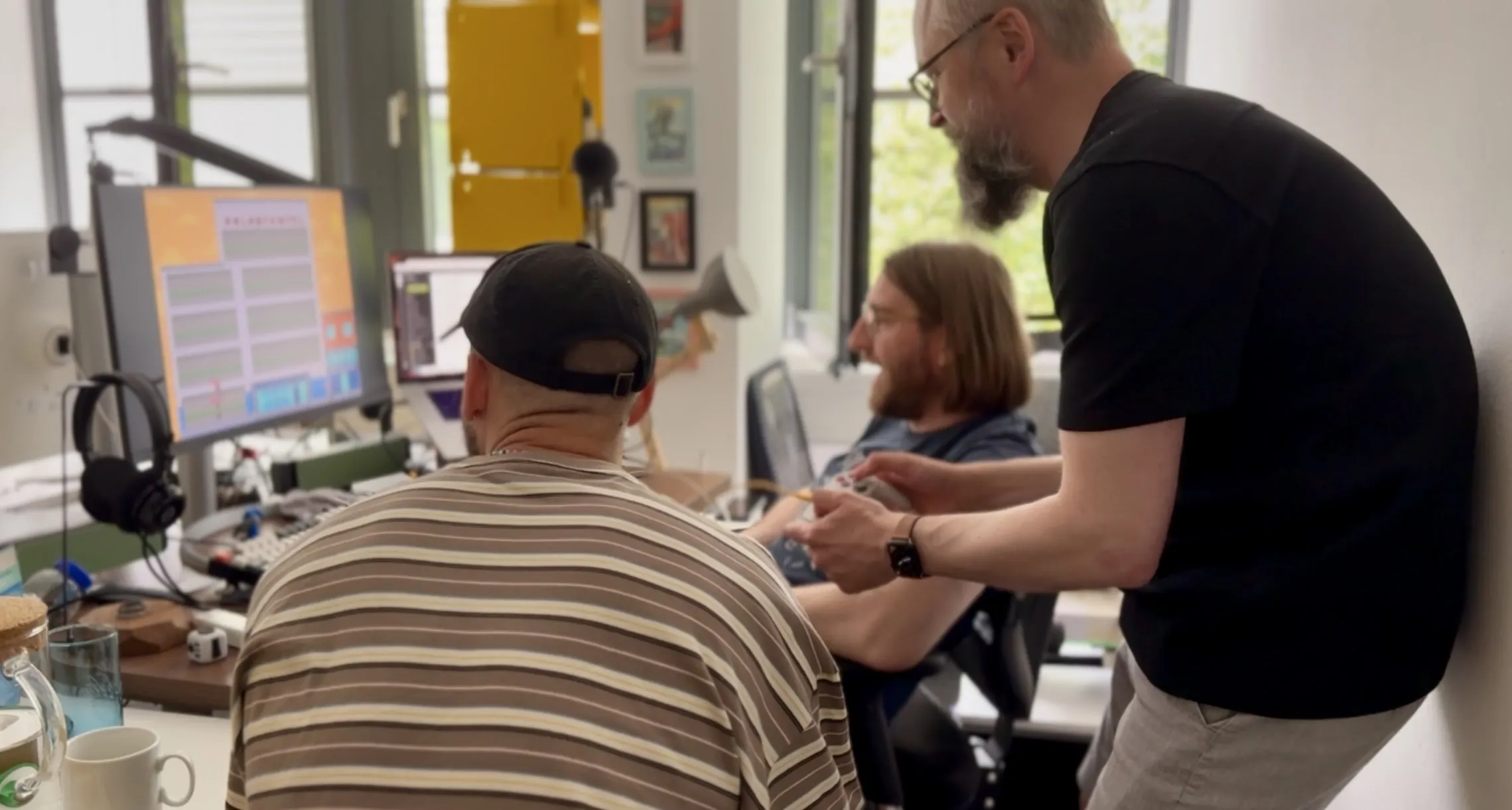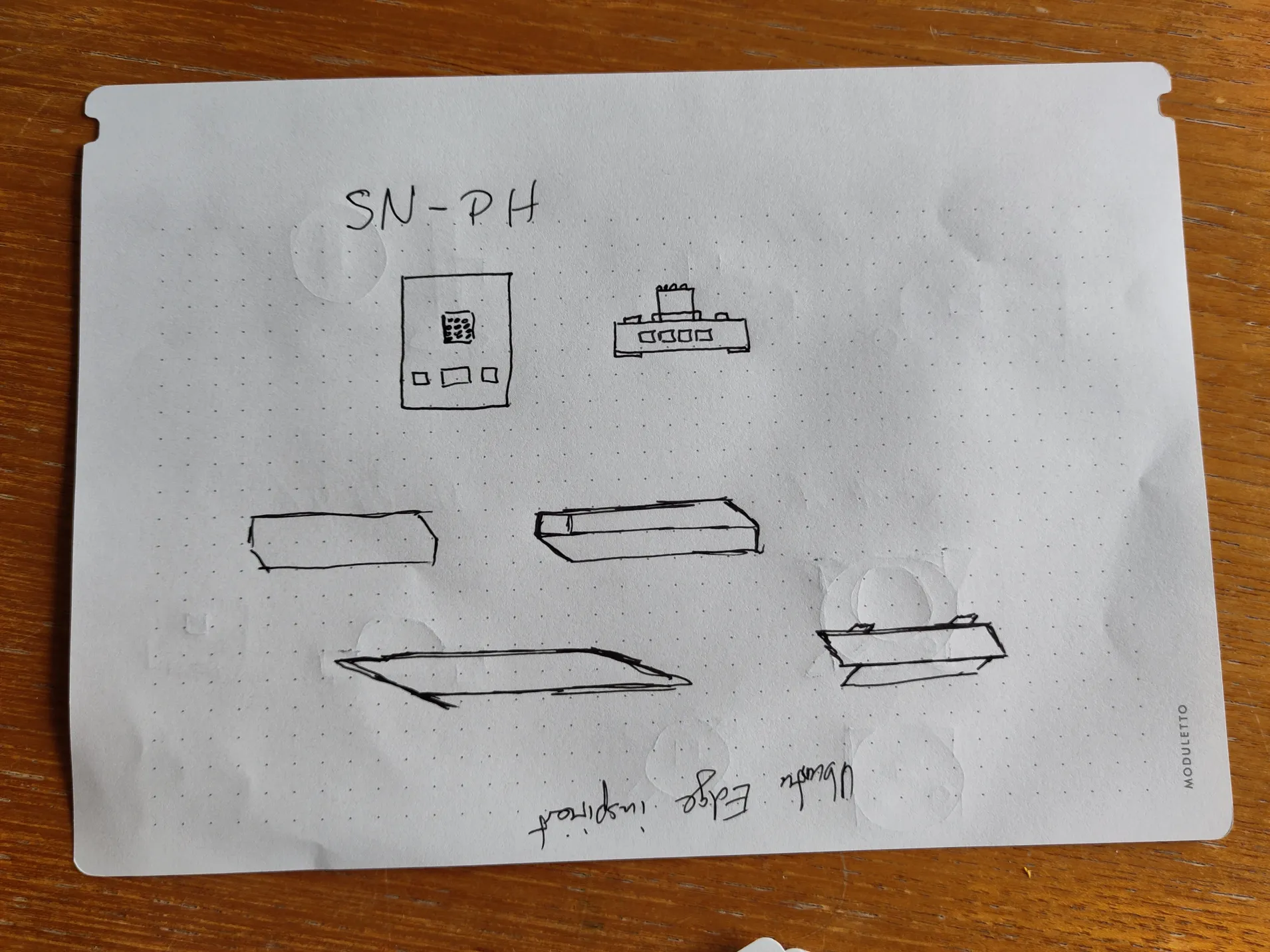Ask me about RooK!
The Kids-Friendly Retro Gaming Console
RooK is a DIY console built by a few nerds, retro gaming fans and parents in Germany. It was important to us to have a retro gaming device for which we could design and 3D print our own cases, that our kids could easily use, and that would be suitable for retro tournaments. Think of it as the ultimate blend of nostalgia and modern convenience – without the annoying hum of an old CRT or the eternal loading screens.
Newsletter
If you have any questions about RooK: Drop us your mail here: askmeabout@rook.computer. We do not have any commercial interests and promise to only send interesting and fun stuff your way :)
What’s inside the RooK Console?
All components are self-designed – right down to the carrier board, the cartridge reader, and the case. Pop in a Raspberry Pi Compute Module, and you’re good to go. With a Pi 5 CM, RooK can even play up to PlayStation 2 games. But let’s be real, the really old games are what truly matter to us. We’re talking about games where a single pixel could define an entire character, and joypads had fewer buttons than a modern car’s dashboard.
And there’s more: You can design and print your own RooK case, making it truly yours. Because what’s cooler than beating your high score? Beating it on a console YOU designed. Take that, Nintendo Labo!



Why build your own console?
In short: For the reason that’s usually the worst of all reasons. But in this case, it’s the best: Because you can. 😎
And let’s be honest, we’re all still waiting for that one feature from our childhood consoles that never quite made it into mass production. Now’s our chance to make it happen, one 3D-printed case at a time.
Why are retro games good for kids?
We love gaming with our kids.
Because: Time spent together playing is not screen time, it’s quality time! Just like in the old days when multiplayer meant huddling around a single TV, rather than shouting at each other through headsets.
Retro games are so well suited for this because they are easy to play but hard to master. It’s much easier for kids to spend 60 or 70 tries beating a level boss, and then eventually turn off the console because a) it’s exhausting and challenging, and b) it’s still fun and fulfilling to do hard things.
Remember that feeling of finally beating Mike Tyson in Punch-Out!!? Pure, unadulterated triumph.
In contrast, modern games are designed to constantly draw us in with continuous dopamine kicks, dedicating our attention to the game instead of Netflix, TikTok, or our family. They’re like digital sugar rushes – thrilling in the moment, but leaving you with a crash. Retro games are more like a slow-cooked meal; satisfying and wholesome.
As nerdy parents, we want to enable our kids to game, but also protect them from hyper-stimulating games. When you observe your children playing Super Mario or Tetris compared to modern Switch games, we’ve consistently found that older games evoke just as much fascination but have much less addictive potential. Kids can regulate themselves much better with older games that have less overstimulation. Plus, no microtransactions or loot boxes trying to raid your piggy bank.
We also wanted to make it possible to save only a single game per cartridge if needed – similar to a Tonie-Box or a Jookie for audio plays or music – but just for gaming. Sure, a cartridge could contain hundreds of games, but that would helplessly overwhelm and overstimulate our children. Imagine telling a kid they have 500 NES games on one cartridge – they’d probably just default to Mario, because choice paralysis is real, even for tiny humans.
RooK’s Genesis Story
It all started when Enno wanted to learn how to source fully assembled PCBs. He already used the software kicad.org to design them but had never ordered one. He wanted to learn this because it would give him a much larger inventory of chips for his own projects. The only problem: he lacked a concrete project. So, like any good engineer, he went looking for a problem to solve with his newfound knowledge.
And then it so happened that Konstantin hosted a second retro gaming tournament and came away from it with two concrete feedbacks: the humming of the old devices is exhausting, and the loading times are annoying. Even if his museum pieces exert a special fascination on the kids. (more on that below) Clearly, the magic of blowing into a cartridge and waiting an eternity for the game to load was lost on the younger generation.
Then it was suggested that we could make our own console. In that conversation, the idea emerged that one could make several console designs and that anyone who wanted to could make their own console design. Because why settle for one iconic design when you can have a dozen?
RooK’s First Design
We found the idea charming to retain the retro gaming character – even in the external design. Because if it doesn’t look like it came straight out of 1989, are you really retro gaming?
We could go crazy and design and print a separate console case for each system! Meaning: For PS2 games, a PS2 case that incorporates and reproduces the console’s design. Then each station directly makes it clear what’s being played here. Imagine a whole wall of custom-designed, 3D-printed consoles, each a tribute to a different era. The ultimate "museum" of gaming, right in your living room.
A special appeal of the tournaments is being able to see and use the old consoles. There’s just something about holding a piece of history in your hands, even if that history sometimes emitted a high-pitched whine.
Konstantin’s first sketches were driven by the idea: Only use rectangles and circles! If the LEGO idea began with the cartridges, why not apply the LEGO concept to the entire device as a design framework? Because who hasn’t dreamed of building their own console out of LEGOs?

Then Konstantin began designing a console with LEGO (!!!)
And as always with LEGO, the ratio was:
- 2% planning
- 6% building
- 92% searching for bricks
So Enno had both a 3D model of the case to build a board that could be ordered from China. The circle of life for a DIY console: design, build, source, repeat.